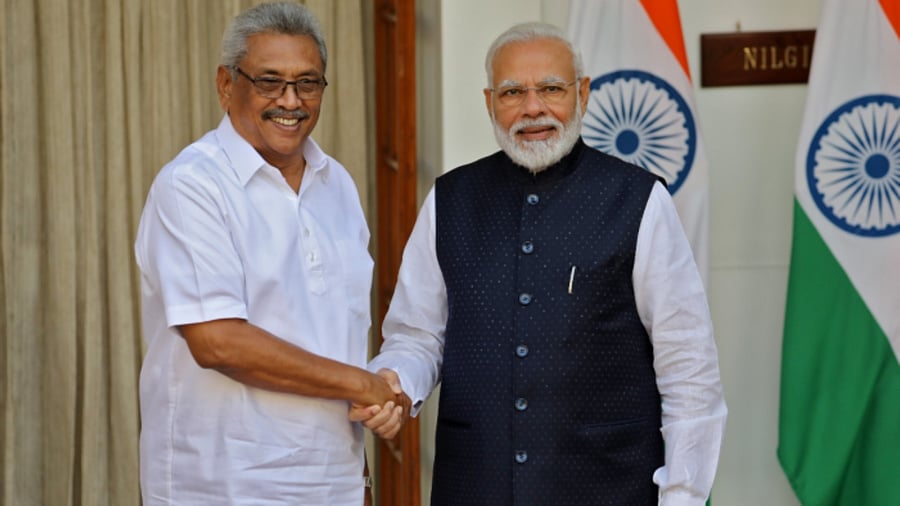
Sri Lanka’s High Commissioner to India Milinda Moragoda had wanted to build a ‘special relationship’ between the two countries through a three-phase plan he had drawn up late last year. Then came Sri Lanka’s economic crisis. He tells DH’s Anirban Bhaumik that with the recent visit of External Affairs Minister S Jaishankar to Colombo, the first phase of the plan – the confidence-building phase -- had ended, and the second phase – building a strategic relationship – had begun.
How did Sri Lanka fall into this economic crisis?
Sri Lanka has always lived beyond its means, spending way more than what we have been earning. Nearly 80 per cent of our revenue is spent on salaries and pensions to people. We are a nation of 22 million people. We have 1.5 million people employed by the government. Another half a million get a government pension. Our interest obligations on government debt amount to 70 per cent of our revenues. This did not happen overnight. It’s a legacy that has its roots in the early years after Independence in 1948. We also had a 30-year-long conflict. Our revenue is one of the lowest in the world – 8 per cent of our GDP. We also have many loss-making State-owned companies. The fundamental problem lies in our budget, this has never been resolved in the past 25-30 years. When Covid-19 struck, all these came to the fore. As Warren Buffet once said, “When the tide goes down, you can see who is swimming naked”.
We have to restructure our economy. It is a difficult and painful process. In fact, we can learn from the reforms in India, like reforms in the SOEs (State-owned Enterprises), reforms in agriculture and electricity sectors, and public-private partnership initiatives. India’s model of using Aadhaar to better target welfare schemes is also interesting for us. We will have to first stabilise the situation and then go for long-term structural reforms.
What help do you expect from India?
India has been a key factor in our stabilisation process, with its four-pronged approach to extending assistance. First, it has extended a Line of Credit of $1 billion to allow us to procure essential supplies like food and medicines. Second, it has given a $500 million credit line to buy petroleum. Third, it helped us respond to the balance of payment crisis by extending a $400 million currency swap and by deferring the Asian Clearing Union (ACU) settlement of $515 million. Fourth, India agreed to increase investment in Sri Lanka, be it in ports, energy, electricity, tourism or IT. India is a critical part of the process of economic revival of Sri Lanka. India’s support will remain very important for us.
Also Read: Sri Lanka’s Emergency ill-motivated
Is Sri Lanka also talking to China, the US and the IMF?
We are in talks with the IMF, and India is playing a key role in bridging the gap till we qualify to enter into an IMF programme. We are holding talks with all our sovereign lenders to deal with our debt crisis. We have to restructure our sovereign debts. But India is the key to all our efforts to get out of the crisis because it stepped up right in the beginning to extend support to Sri Lanka.
The US had come up with the Brady Plan and issued Brady Bonds to help when several South American nations had found themselves in debt crises in the 1980s. I think India could play a similar role in this region because it has the economic strength to do this. What India is doing now to help Sri Lanka could be a precursor to it playing such a role.
There was a perception in New Delhi that Colombo was moving close to China, overlooking the security interests of India.
Perception is important but, at the same time, building trust and confidence between the countries and their leadership is also important. And I think that is what we are achieving now. The first rule that we set is “No Surprises”. In other words, we have an open relationship. If India is worried about something, it can come forward and tell us about it. We do the same when we have an issue. We call it “as we see it”. That is what we have achieved in the past 6-8 months.
Has Sri Lanka walked into China’s debt-trap?
I think this is an exaggeration. Our official debt to China is only about 10 per cent of our total debt. It’s not small, but it’s not what has caused our problems. We have borrowed heavily in foreign exchange. We have borrowed $12-15 billion on commercial terms. We cannot really blame somebody outside for our crisis.
What, from your viewpoint, was the significance of External Affairs Minister S Jaishankar’s recent visit to Sri Lanka?
It was a milestone visit. In a way, it closed the ‘transactional phase’ or ‘confidence-building phase’ referred to in the ‘Integrated Country Strategy’, which we at the High Commission of Sri Lanka in New Delhi had put forward. I think we are achieving a level of confidence. We are now beginning a new phase – the second phase when we need to work on building a strategic relationship. There was significant progress in our defence cooperation during the visit – an MoU for India to help Sri Lanka set up a Maritime Rescue Coordination Centre; India giving us Dornier aircraft for maritime surveillance, as well as a floating dock. India also made a grant of $15 million for the promotion of our Buddhist ties and built a beautiful cultural centre in Jaffna. An agreement was signed for India to build hybrid power projects in Sri Lanka’s northern region, close on the heels of another for India’s NTPC to build a solar power project at Sampur.
Watch the latest DH Videos here:

